Suppose you have a cabinet in your home that you would like to keep locked. Installing a lock on a cabinet door is a simple process, and in this article, we will walk you through the steps. Whether you are looking to secure valuable possessions or want to ensure your children cannot get into the cabinet, a lock is a great solution. Keep reading for instructions on how to install a lock on a cabinet door yourself!
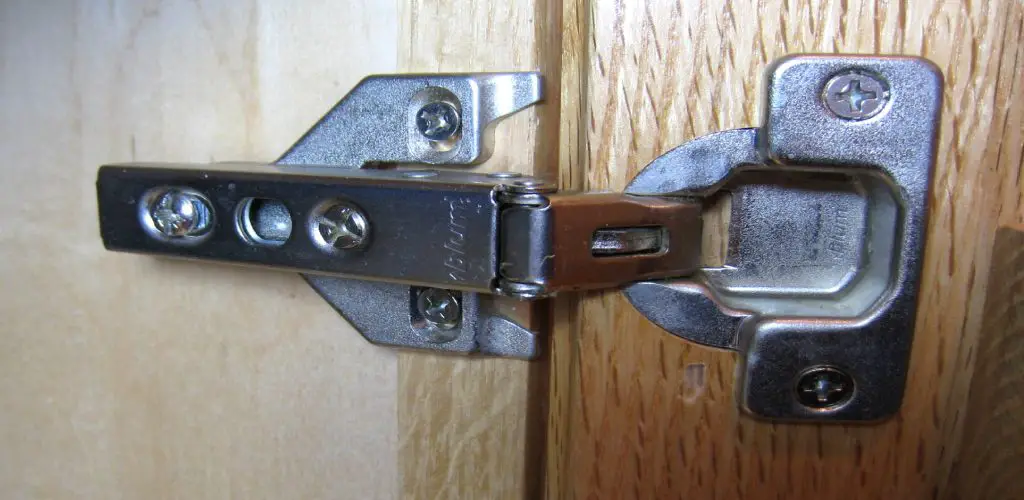
Many people choose to install a simple keyed lock on their cabinet doors. These are easy to find at most hardware stores and relatively inexpensive. If you have small children in your home, you may also consider a childproofing safety lock. Little fingers cannot open these locks, but an adult can easily unlock them when needed. It is important to note that a professional must install many childproofing locks.
A Detailed Guide on How to Install a Lock on a Cabinet Door
Option 1: Push-down Cabinet Door Lock
A push-down cabinet door lock is a mechanical device that uses a spring-loaded bolt to latch onto the inside of a cabinet door. The bolt is released when the button on the safety is depressed, allowing the door to be opened.
Tools and Materials Needed
- Tape measure
- Pencil
- Drill with a 1/8-inch drill bit
- Screwdriver
Step 1.
Begin by measuring the thickness of your door. Most push-down locks can accommodate doors up to 1″ thick. If your door is thicker than 1″, you may need to use a different type of lock or take extra measures to ensure the lock is secure.
Step 2.
Next, measure the distance between the edge of the door and where you want the lock to be installed. Once you have these measurements, use a pencil to mark the location of the holes that will need to be drilled.
Step 3.
Drill two pilot holes at the marked locations. Be sure to use a more minor drill bit than the screws used to secure the lock to the door.
Step 4.
Install the push-down lock into the pilot holes and secure it with screws. Be sure to snug the screws down, but don’t over tighten them as this could strip the hole or damage the door.
Step 5.
Test the lock by depressing the button and attempting to open the door. Your belongings should now be safe and sound inside your locked cabinet if everything is working correctly!
Advantages of Push-down Cabinet Door Lock
- They are easy to install
- They do not require any special tools
- They are ideal for cabinets with thin doors
- They provide good security for your belongings
Option 2: Magnetic Cabinet Door Lock
A Magnetic Cabinet Door Lock is a device that helps to secure cabinet doors and drawers, preventing children from accessing dangerous or off-limits items. Most magnetic locks come with two parts – a catch that attaches to the inside of the door or drawer and a magnet that attaches to the frame. When the door or drawer is closed, the magnet catches onto the catch, holding the door or drawer shut.
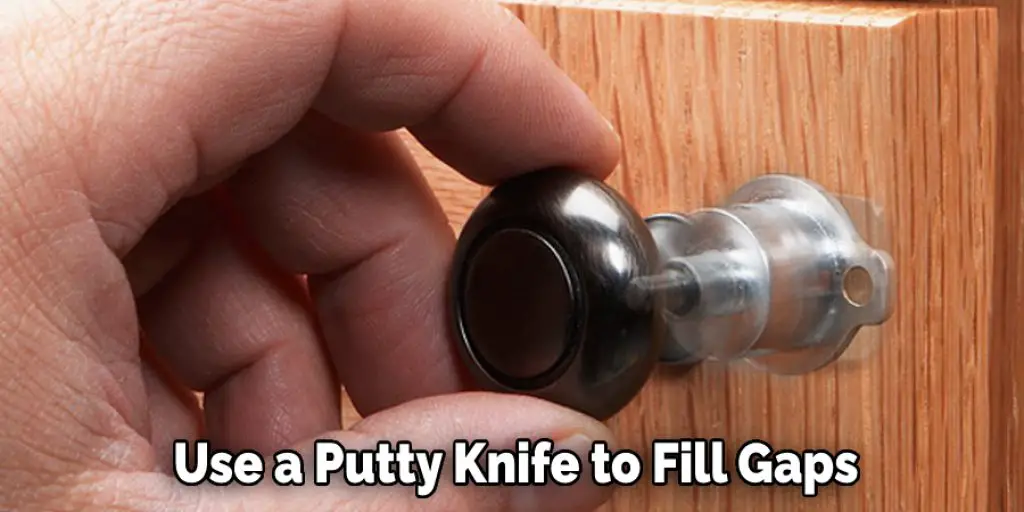
Tools and Materials Needed
- Drill
- 1/8″ drill bit
- Screwdriver
- Measuring tape or ruler
- Magnetic Cabinet Door Lock kit
Step 1:
The first step is to determine where to place the lock on the cabinet door or drawer. It is generally best to place the lock near the top of the door for cabinet doors, out of reach of small children. For drawers, it is typically best to place the lock on the front of the drawer, again out of reach of small children. Once you have determined the placement of the lock, use a pencil to mark the location of the holes that will need to be drilled.
Step 2:
Next, using a drill and 1/8″ drill bit, drill pilot holes at the marks you made in Step 1. These pilot holes will make it easier to screw in the screws that hold the lock in place.
Step 3:
Now, it’s time to install the lock. Begin by holding the catch (the piece that will go on the inside of the cabinet door or drawer) in place outside the door or drawer. Then, using a screwdriver, screw in the screws that came with the kit. Next, take the magnet and attach it to the inside of the cabinet door or drawer, lining up the holes with those drilled in Step 2. Finally, use a screwdriver to screw in the screws that came with the kit.
Step 4:
Once you have installed the lock, it is essential to test it to ensure it is working correctly. First, close the door or drawer and try to open it – the lock should prevent the door or drawer from opening. If the lock is not working correctly, check to ensure that the screws are tight and that the magnet is perfectly aligned with the catch.
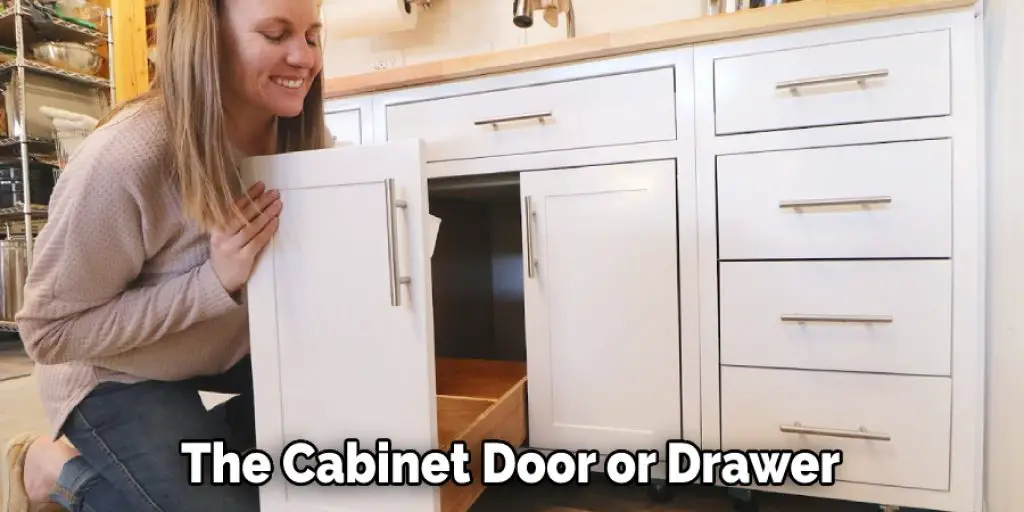
Installing a magnetic cabinet door lock is a quick and easy way to help childproof your home and keep your children safe. With just a few tools and materials, you can have this type of lock installed.
Advantages of Magnetic Cabinet Door Locks:
- They are quick and easy to install.
- They are relatively inexpensive.
- They do not require any special tools or skills to install.
- They can be used on both cabinet doors and drawers.
Option 3: Sliding Cabinet Door Lock
A Sliding Cabinet Door Lock is a device that can be mounted on the inside of a cabinet door. This type of lock is often used with a keyed lock and is activated by a simple push or pull on the door.
Tools and Materials Needed:
- Drill
- 1/8 inch drill bit
- Phillips screwdriver
- Cabinet door lock
- Cabinet door latch (optional)
Step 1: Before You Start
Before you begin, make sure that you have all the tools and materials you will need. This project should only take a few minutes to complete, but it is always better to be prepared.
Step 2: Drill Holes for the Lock
Use a drill and 1/8 inch drill bit to create two holes in the cabinet door. The holes should be spaced to be evenly aligned with the lock body. If using a cabinet door latch, drill a third hole in the door.
Step 3: Install the Cabinet Door Lock
Thread the screws that come with the Cabinet Door Lock through the holes in the door. Use a Phillips screwdriver to tighten the screws until they are snug against the door. Install a cabinet door latch in the third hole if you are using a cabinet door latch.
Step 4: Test the Lock
Before using the lock, test it to ensure that it is working correctly. Please close the door and try to pull or push on it to do this. The door should not move. If it does, loosen the screws and try again.
Installing a Cabinet Door Lock is a simple project that can be completed in just a few minutes. With this type of lock, you will be able to keep your cabinets closed and secure without having to worry about keys.
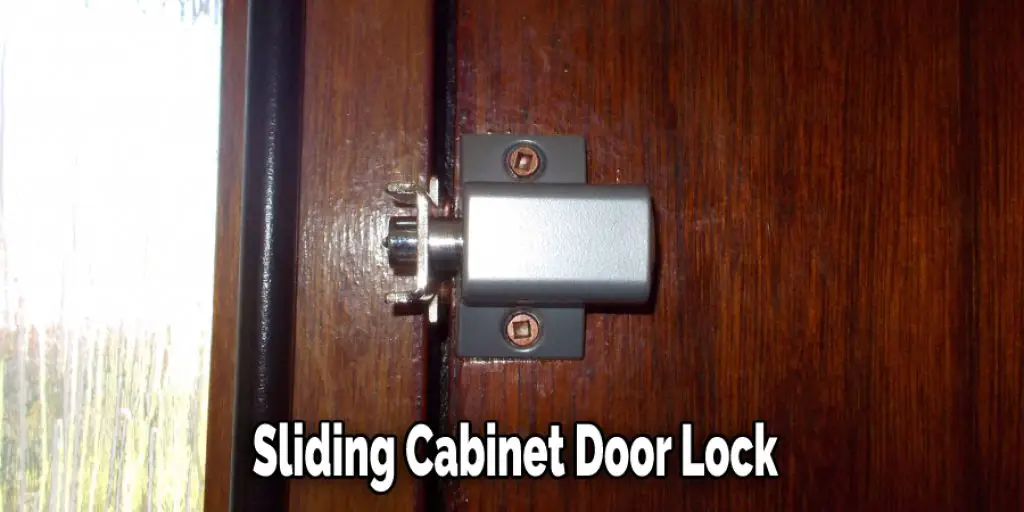
Advantages of Sliding Cabinet Door Lock
- Easy to install
- No need for keys
- Can be used with a keyed lock
Can You Add a Lock to Any Cabinet?
For added security, many homeowners choose to install locks on their cabinets. While adding a lock to almost any cabinet is possible, there are a few things to keep in mind before making this modification. First, consider the type of lock you want to install.
There are two main types of cabinet locks: padlocks and keyed locks. Padlocks are less expensive and easier to install, but they can be more easily defeated than keyed locks. If security is your primary concern, keyed locks are the better choice. Second, take into account the material of your cabinets.
If your cabinets are made of softwood or particleboard, installing a lock without damaging the materials will be difficult. It is best to consult with a professional before proceeding in these cases. With these factors in mind, you can decide whether or not to add a lock to your cabinets.
How Does a Cabinet Lock Work?
Most cabinet locks work by either latching onto the doorframe or fitting snugly inside the door itself. There are also combination locks that use both methods. The former is more common, as it’s easier to install and doesn’t require any special tools or drilling.
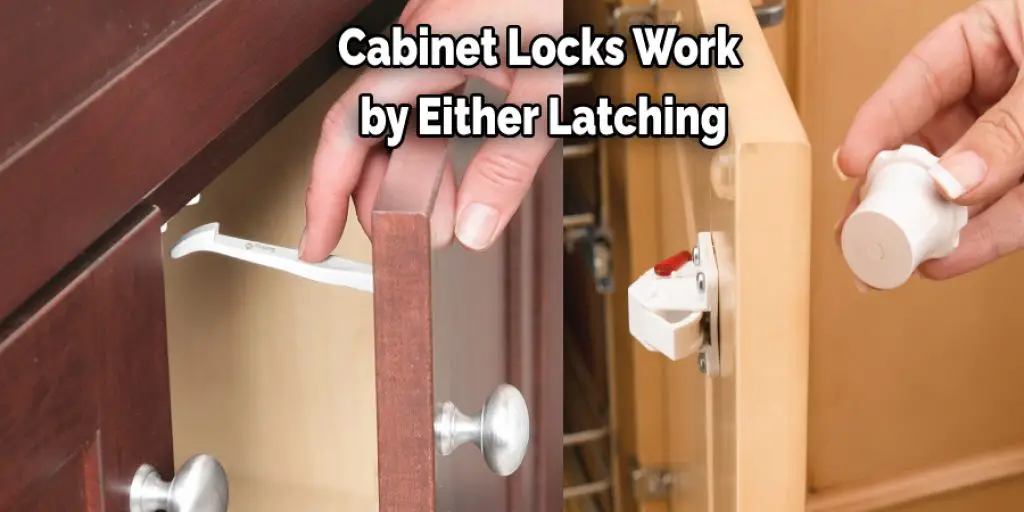
There are two main cabinet locks: drawer locks and cupboard locks. Drawer locks are usually surface-mounted and fit onto the top or side of the drawer. Cupboard locks are recessed into the door and can be either mortise-style or deadbolt-style.
Mortise-style locks have a plate that fits into a hole cut into the door, while deadbolt-style locks have a bolt that extends into a hole in the doorframe. Both locks are secure, but deadbolt-style locks are more challenging to pick.
Conclusion
Now that you have learned how to install a lock on a cabinet door, be sure to practice the steps so that you can do it quickly and efficiently when the time comes. Always use the correct size screws and drill bit to avoid damaging your cabinet. And most importantly, have fun! Installing a lock on a cabinet door can provide peace of mind and security for you and your family.








